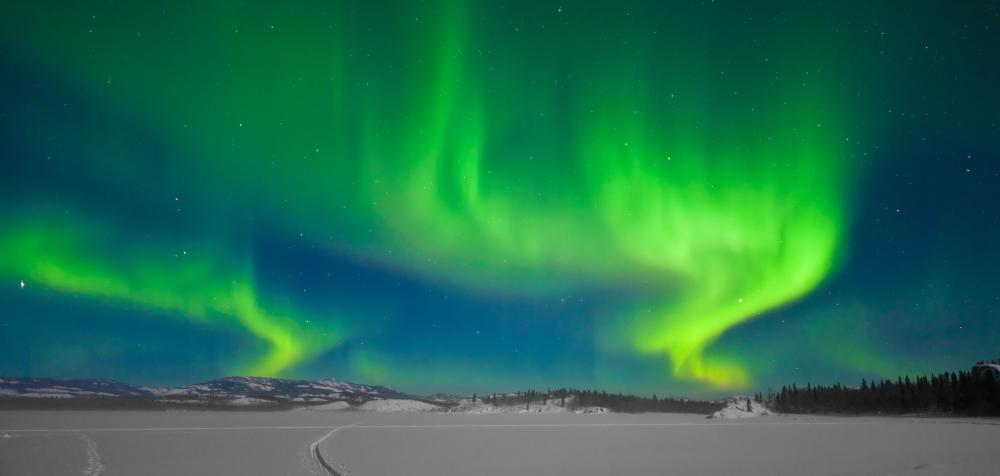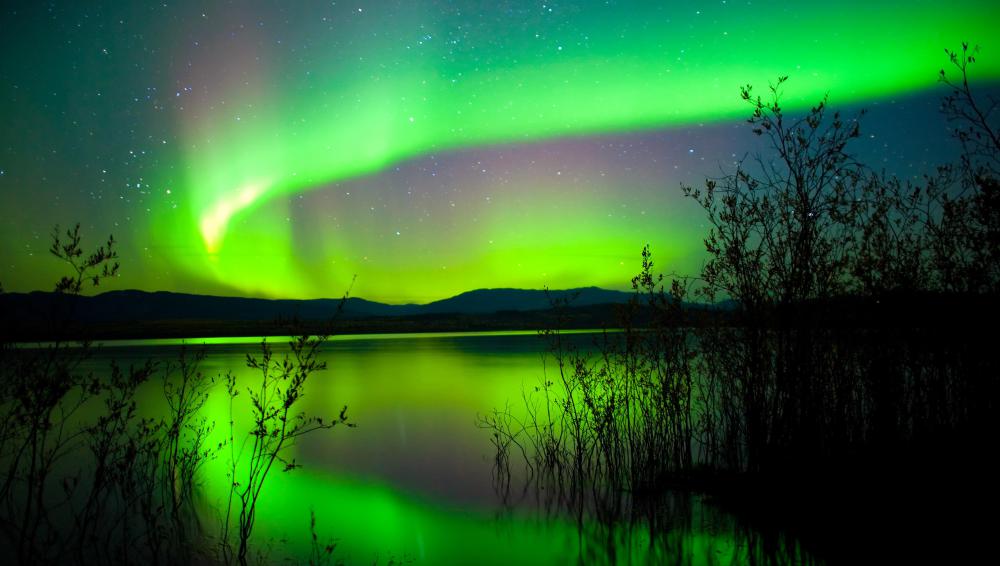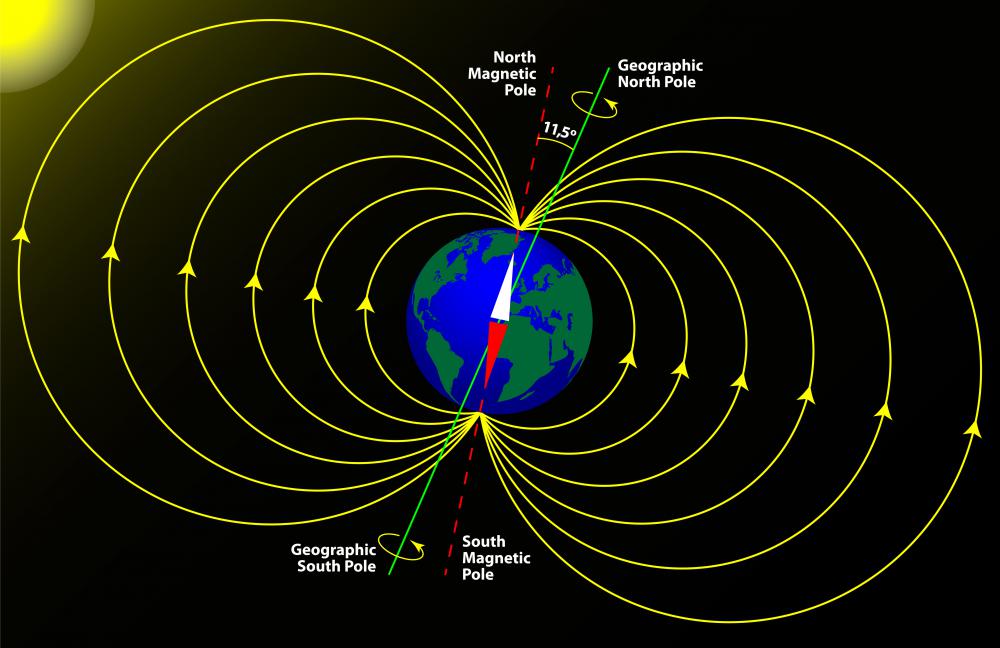At AllThingsNature, we're committed to delivering accurate, trustworthy information. Our expert-authored content is rigorously fact-checked and sourced from credible authorities. Discover how we uphold the highest standards in providing you with reliable knowledge.
What are the Aurora Borealis?
The Aurora Borealis, also called the Northern Lights, are curtains of light created when fast electrons from the solar wind slam into the rarefied gas of the upper atmosphere. The mechanism of action is similar to the way electrons in a television generate specks of light when they impact the phosphor-coated inside of the screen. The physics of the phenomenon are complex, however, and not perfectly understood. The energy of certain types of aurora probably derives from a dynamo effect of the interplanetary (solar wind-caused) magnetic field against the Earth's magnetic field. This is similar to the way electricity can be generated by rotating a magnet within an electromagnetic coil.
The aurorae are green or faintly red, produced by re-emission from atmospheric oxygen. Atmospheric nitrogen sometimes produces very faint blue/violet aurorae. Some of the most magnificent pictures of the Aurora Borealis have been taken from the Space Shuttle or International Space Station, which views it from an angle impossible from the ground.

The Aurora Borealis is most easily observed about 1,500 miles (2,400 km) from the Earth's magnetic poles. A southern variant also exists, called the Aurora Australis, but this is rarely observed because it mainly occurs in the oceans around Antarctica. The Earth's magnetic poles are located about 11° away from the geographical poles, and in the north, the magnetic pole is located just north of Canada, meaning the lights are easily observable from places like Fairbanks, Alaska. Rarely, during magnetic storms and coronal mass ejections (super solar-flares), the phenomenon becomes much more intense, and it can be visible as far south as Boston. In 1856, a coronal mass ejection produced aurorae so strong that a person could apparently read a book at night in New York using the light produced.

The Northern Lights have long been subjects of mythology and superstition. Scandinavians once thought they were produced by the reflections of huge schools of herring, while in Scotland, they were called the "merry dancers." Gold miners in Alaska believed they were reflections of the greatest mother lode. Until the advent of scientific satellites, many of the theories about the aurorae were very speculative, and even today, the understanding of researchers is not perfect, but it is steadily improving.
Frequently Asked Questions
What causes the Aurora Borealis?

The Aurora Borealis, or Northern Lights, is caused by collisions between electrically charged particles from the sun that enter the Earth's atmosphere. These collisions occur above the magnetic poles of the northern and southern hemispheres, creating a display of light that can be seen near the Earth's magnetic poles.
Where can you see the Aurora Borealis?

The Aurora Borealis is best viewed in high-latitude regions around the Arctic, such as Norway, Sweden, Finland, Iceland, Canada, and Alaska. The optimal conditions for viewing are during clear, dark nights, typically from September to April, when there is minimal light pollution.
What colors are displayed in the Aurora Borealis?
The Aurora Borealis commonly displays a range of colors, including green, pink, purple, red, yellow, and blue. The variation in colors is due to the type of gas particles that are colliding. For instance, oxygen molecules located about 60 miles up produce a green color, which is the most common hue observed in the auroras.
Can the Aurora Borealis affect Earth's technology?

Yes, the solar storms that cause the Aurora Borealis can also disrupt Earth's technology. They can cause fluctuations in the geomagnetic field, leading to issues with satellite communications, GPS systems, and power grids. However, such disruptions are relatively rare and usually only occur during particularly strong solar storms.
Is there a Southern Hemisphere equivalent to the Aurora Borealis?
Yes, the Southern Hemisphere has its own counterpart called the Aurora Australis, or Southern Lights. It occurs in the southern magnetic pole and can be observed from high southern latitudes in Antarctica, Chile, Argentina, New Zealand, and Australia.
How often do the Aurora Borealis occur?
The Aurora Borealis occurs regularly, most nights at high latitudes, although it may not always be visible due to daylight or weather conditions. During periods of increased solar activity, known as the solar maximum, auroras can be observed more frequently and with greater intensity. Solar cycles typically last about 11 years, with the next peak expected around 2025.
AS FEATURED ON:
AS FEATURED ON:















Discussion Comments
I imagine that the people who lived hundreds of years ago were pretty scared and mesmerized by the Northern Lights. I know that if I walked outside and saw the sky dancing with brilliant colors, I would start praying for protection right away!
Even something so beautiful could be scary if you didn't know why it was happening. For such a large section of sky to light up like that, you would have to have a pretty major event.
@Oceana – As far as I know, they don't occur naturally. I have heard that they are given some kind of thin metallic coating, and this is what causes all the different colors to appear in one stone.
My grandmother told me that Aurora Borealis stones were really popular back in the fifties. She has a brooch made with them, and it is the only one I have ever seen. She said they were pretty expensive back in the day.
Has anyone here ever heard of Aurora Borealis stones? My friend has some earrings that are made with them, and they are gorgeous.
The stones have so many colors in them. I have no idea how these were made, and I wonder if they occur naturally.
@anon190830 – You saw them in the daytime? That is amazing!
I live in the deep South, so I doubt I will ever get the chance to see these lights. I imagine that they are the things childhood dreams are made of, though. I can just envision unicorns dancing around in the sky, encircled by a rainbow of moving colors.
the aurora borealis were seen in Cottage Grove, Oregon recently in the mid afternoon. It totally blew us all away knowing the atmospheric generation of the upper amostphere in the daytime at 3 p.m., and it is usually at night. it was the most beautiful of all the western hemisphere has seen in a while.
I think it is nice how there is an aurora borealis forecast now. Years ago, they did not have such a thing and I missed out on viewings. Now I can turn on the television and get information on the next coming event. I could watch these gorgeous lights a thousand times.
I remember seeing these beautiful lights as a child. I did not know they were called the aurora borealis lights. We just thought that they were very pretty. They also did seem to happen very often; it was like they were a rare event.
Post your comments